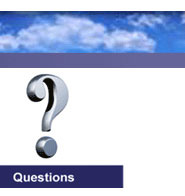Contact Us
Fill in the form below or you can also visit our contact us page.
Before you start trying to solve a problem you need to be sure that a problem exists, discover precisely what it is, and decide whether it is important enough to warrant time and effort in solving it. This next two articles are aimed at helping you :

Recognising problems
Some problems arise suddenly, without warning, and are painfully obvious by their effects. Others develop more slowly, perhaps over many days, weeks or months, and have a more subtle influence. On some occasions, what you think is a problem may turn out not to be a problem at all. It's important to be able to recognise problems efficiently.
All objectives and obstacles go through phases to some extent, and a problem arises when a current objective coincides with an effective obstacle. The growth and decay of objectives and obstacles varies tremendously. For example, industrial unrest which leads to strike action may have been growing for many months or years. Similarly, annual sales targets are achieved gradually over twelve months and may undergo seasonal and monthly variations.
If you can monitor the growth and decay of objectives and potential obstacles you will be in a position to take action to prevent a problem occurring, or at least be prepared to tackle it immediately when it arises.
You should never be in the position of facing a problem which could have been foreseen or, worse still, not recoginsing that a problem exists. Recognising problems efficiently involves being aware of the areas in which they may arise and establishing specific methods of detection. The following methods will help you to detect problems early:
Monitor performance
You can detect any shortfall in agreed standards or targets by monitoring performance. This means first ensuring that all staff know precisely what standards of work and behaviour they are required to maintain, and setting up systems to measure the standards achieved.
Observe staff
By doing this you can detect changes in behaviour which may reflect an underlying problem. Make sure you are aware of any concerns staff may have in their work or their relationships with others, both inside and outside work.
Review and compare
If you regularly review and compare past performance and behaviour with the current situation you can detect gradual deterioration.
There are many methods of measuring performance, from simple subjective judgements made about an individual' behaviour, to sophisticated point of sale computer monitoring systems used by multiple retailers.
Whatever method you use it's important that you don't jump to conclusions about the data they provide. Until you investigate the situation you can't be sure that a problem exists or you may assume the cause incorrectly.
To help you recognise opportunities,you can supplement the list above by looking at your major areas of responsibility and asking yourself questions such as:
You can ask the same questions of colleagues, other departments and the organisation as a whole, looking for opportunities in terms of both performance (such as output, efficiency and profitability) and the personal. needs of staff (such as safety, comfort and job satisfaction).
When you have recognised that a problem exists, you should decide who has responsibility for the situation, ie who 'owns' it. If a problem is not your direct responsibility you will need to inform the owner. You may be asked to deal with it anyway, but the owner may have the information or resources needed to find an effective solution, or you may need approval later to implement your solution. You could also be asked to solve a problem for someone else, or to contribute to its solution. However you become involved in solving a problem, you must ensure that it is defined effectively.
Defining problems
When you first become aware of a problem it is often as a hazy notion that things are not as they should be, or that they could be improved. To deal with the situation effectively you need to describe or define it as something which you can act upon. These definitions vary in complexity but their primary function is to point you in the right direction for further work on the problem. They help you to
To define a problem effectively you need to gather information about the situation. The method which detected the problem will provide enough information to enable you to make a preliminary definition.
Closed and open-ended problems are usually defined in different ways. With closed problems, where finding a solution first involves finding the cause, the emphasis is on identifying and specifying the possible causes. Open-ended problems, where there are many possible solutions, require a definition which broadens the search for solutions. Defining closed problems is an analytical, convergent process. Defining open-ended problems is a more creative, divergent process.
Read the next article: Defining problems – closed and open ended problems